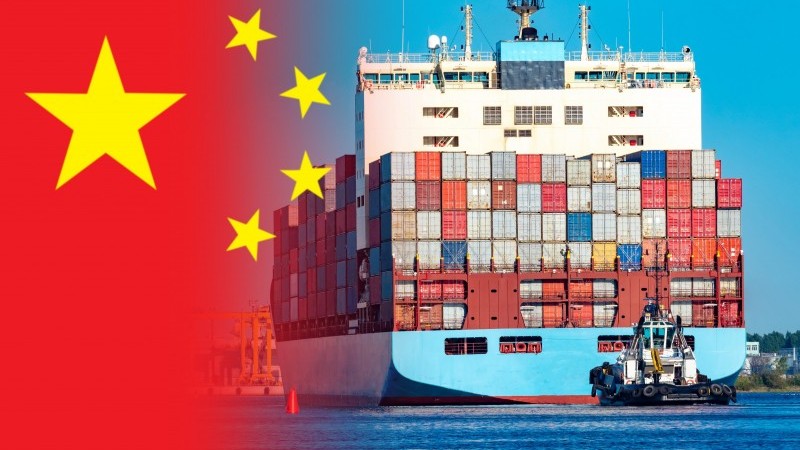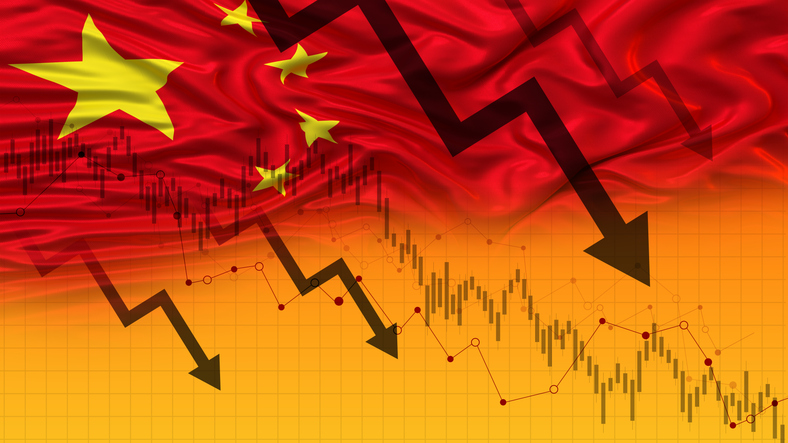China’s Exports Slow, Imports Shrink: Decoding the Data and the Shadow of Trump’s Tariffs
China’s status as the world’s manufacturing powerhouse is under growing strain, as the latest trade data reveals significant declines in both exports and imports. This downturn has global implications, particularly as former U.S. President Donald Trump hints at a renewed push for tariffs on Chinese goods, fueling fears of escalating economic tensions. This article delves into the trade statistics, explores the underlying causes of China’s slowing trade activity, and examines how potential Trump-era tariffs might impact the global economy.

The Alarming Trade Data: A Snapshot of Decline
Exports: A Faltering Engine
China’s exports, a key driver of its economic growth, have shown alarming signs of deceleration. According to the latest customs data, exports fell by 6.7% year-on-year in October 2024, marking the fifth consecutive month of decline. Key sectors, such as electronics and machinery, which collectively account for nearly half of China’s export revenue, have seen diminished demand across key markets.
- The U.S. Market: Exports to the United States, traditionally China’s largest trading partner, have plunged by 18.1% compared to last year. This decline reflects a combination of factors, including geopolitical tensions, reshoring of supply chains, and shifting trade policies under the Biden administration—policies that Trump’s tariffs could exacerbate if reinstated.
- The European Union: Exports to the EU have similarly dropped by 12.4% year-on-year, as European economies grapple with stagnation, inflation, and reduced consumer spending.
- Emerging Markets: While emerging markets like Southeast Asia and Africa initially provided a buffer, demand here too is waning due to high global borrowing costs and declining commodity prices.

Imports: Reflecting Domestic Challenges
China’s imports, meanwhile, shrank by 5.1% year-on-year in October 2024, signaling weakening domestic demand and ongoing economic troubles. This decline is particularly notable in sectors that are typically indicative of industrial activity and consumer confidence:
- Industrial Raw Materials: Imports of critical inputs such as iron ore and copper fell by 11% and 9%, respectively, reflecting a slowdown in construction and infrastructure projects.
- Consumer Goods: Imports of luxury goods and electronics have plummeted, mirroring a contraction in consumer spending as disposable incomes stagnate and unemployment rises.
- Energy: Even energy imports, including crude oil and natural gas, have seen reductions despite the winter season, as manufacturing output declines and energy efficiency measures take hold.
Underlying Causes of China’s Trade Decline
The dual decline in exports and imports is not an isolated phenomenon but rather the result of several intersecting economic and geopolitical factors:
1. Global Economic Slowdown
The global economy is facing headwinds from high inflation, elevated interest rates, and slowing growth in major economies. Key importers of Chinese goods, including the U.S. and the EU, are prioritizing domestic production or diversifying supply chains away from China.
2. Structural Challenges in China
China’s economy is grappling with domestic challenges, including a sluggish real estate sector, rising youth unemployment (hovering around 21% in urban areas), and declining consumer confidence. These issues have weakened domestic demand, creating a feedback loop that exacerbates the decline in imports.
3. Shift in Global Supply Chains
Efforts by multinational corporations to reduce reliance on Chinese manufacturing, often dubbed “China+1” strategies, have accelerated in recent years. Countries like Vietnam, India, and Mexico are increasingly absorbing production that once flowed exclusively to China.
4. Geopolitical Tensions
Relations between China and the West have soured, with disputes over technology transfer, intellectual property rights, and geopolitical conflicts like Taiwan creating additional barriers to trade. The Biden administration’s export controls on semiconductors and Trump-era tariffs still in place are stark reminders of the enduring strain.

The Return of Trump Tariffs: What Lies Ahead?
Donald Trump’s potential return to the political stage brings renewed uncertainty to Sino-American trade relations. In recent speeches, Trump has reiterated his commitment to imposing “tough tariffs” on China, framing it as a critical issue for protecting American jobs and countering Beijing’s global ambitions.
The Legacy of Trump’s Trade Policies
During his presidency, Trump imposed tariffs on approximately $370 billion worth of Chinese goods, ranging from steel and aluminum to consumer electronics. These tariffs led to:
- Higher Prices for U.S. Consumers: Many American companies passed increased costs onto consumers, contributing to inflationary pressures.
- Disruption of Global Supply Chains: Tariffs incentivized companies to diversify supply chains, creating opportunities for countries like Vietnam and India but reducing overall trade efficiency.
- Retaliation from China: Beijing imposed its own tariffs on U.S. goods, hitting American farmers and manufacturers particularly hard.
Potential Impacts of a Tariff Revival
If Trump reinstates or expands tariffs on Chinese goods, several outcomes are likely:
- Further Decline in China’s Exports: Additional tariffs could significantly curtail China’s shipments to the U.S., exacerbating its already shrinking export numbers.
- Pressure on Global Growth: Heightened trade barriers would ripple across global supply chains, raising production costs and stoking inflation in multiple countries.
- Geopolitical Escalation: Renewed tariffs could harden Beijing’s stance on key issues, potentially intensifying conflicts over Taiwan, the South China Sea, and technology restrictions.

Implications for the Global Economy
China’s trade slowdown and the prospect of new U.S. tariffs under Trump’s leadership would have far-reaching consequences:
1. Global Inflation Pressures
If tariffs are reintroduced, the costs of goods ranging from consumer electronics to raw materials could rise globally. With many economies already struggling with inflation, this could worsen central banks’ challenges.
2. Supply Chain Restructuring
While countries like Vietnam, India, and Mexico may benefit from a shift in production, global supply chains would face renewed disruptions. This transition would take years, increasing inefficiencies in the short term.
3. Commodity Markets in Flux
China’s shrinking import demand has already sent ripples through commodity markets. Additional trade restrictions could further reduce global demand for metals, energy, and agricultural products, destabilizing exporters like Brazil, Australia, and Russia.
4. Trade Alliances and Regional Cooperation
As China seeks to counterbalance U.S. pressure, it is likely to deepen ties with regional trade partners under initiatives like the Regional Comprehensive Economic Partnership (RCEP). These alliances could alter global trade flows and shift power dynamics.










